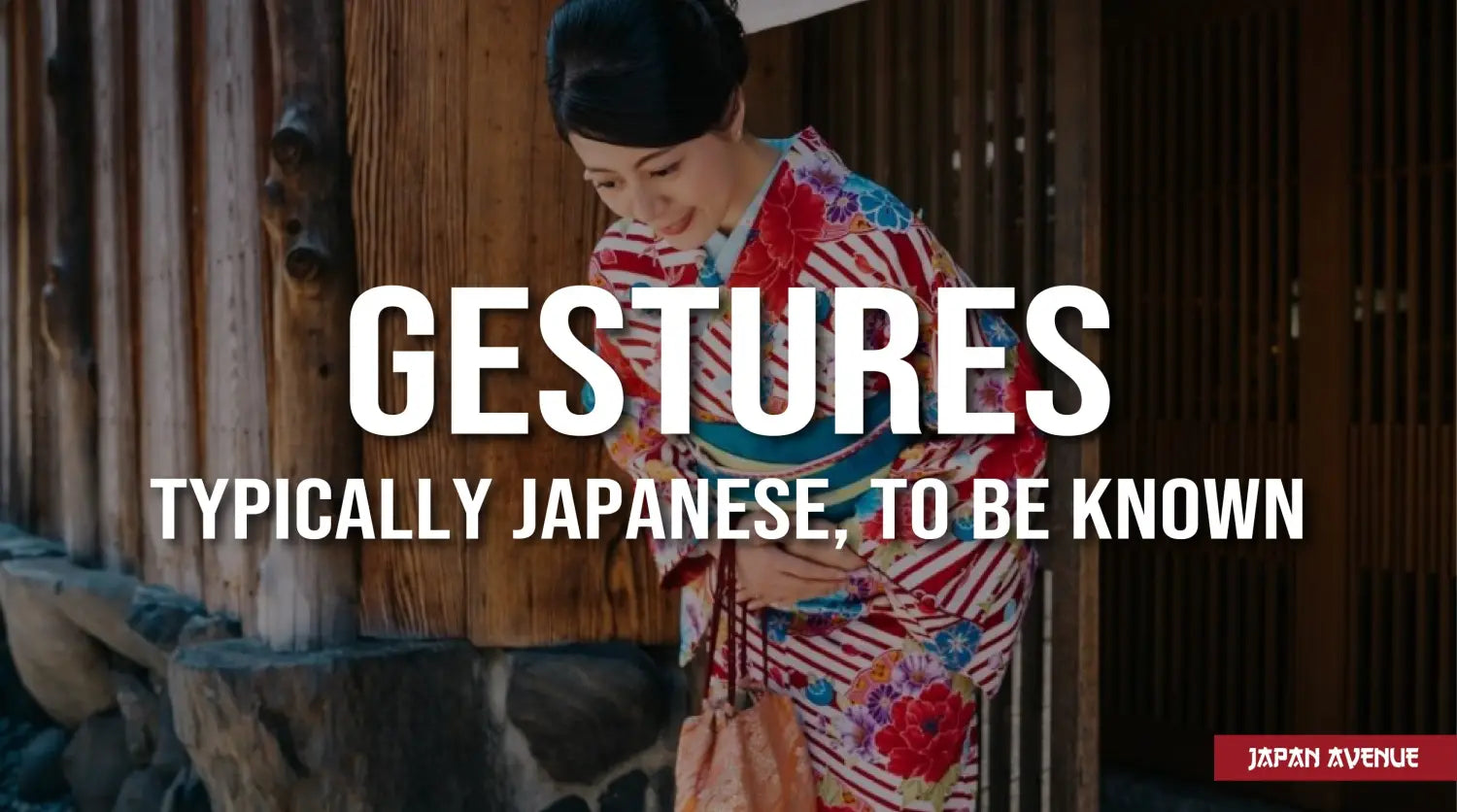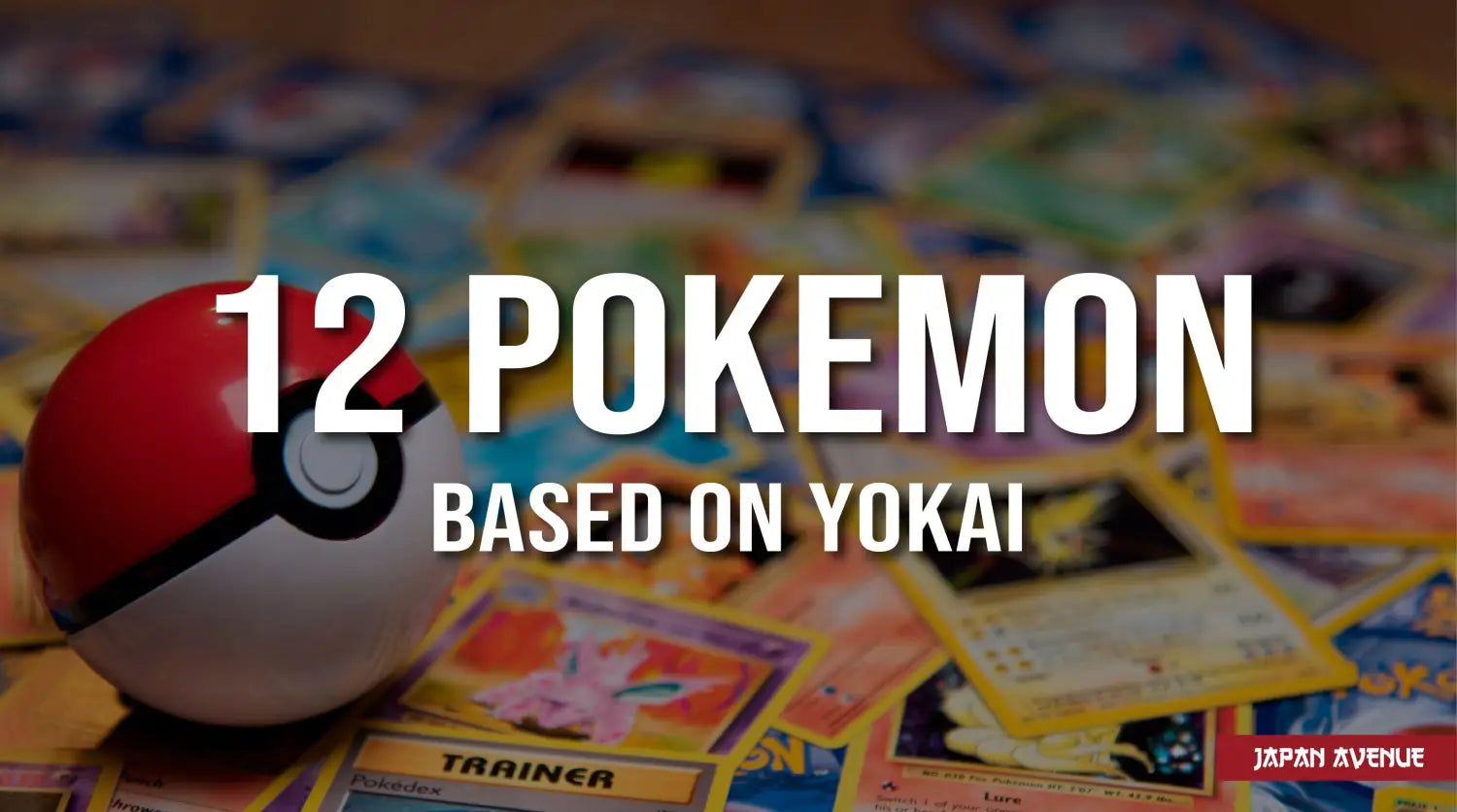Clothes, gestures, postures, mimics... in each country, there are significant cultural differences, whether in the way of dressing, behaving or communicating. Body language will also vary from one end of the globe to the other. Japanese gestures support the spoken language and are generally difficult to decipher for the majority of Westerners.
Moreover, when traveling in the archipelago, you will quickly realize that politeness in Japan is mandatory. Therefore, it is advisable to learn about good manners beforehand, so as not to be considered a rude gaijin (foreigner).
Let's have a closer look at the most common Japanese gestures:
🙇 Greeting with a slight bow

Have you ever noticed that Japanese people do not kiss or shake hands? In Japanese culture, physical contact is excluded, including when greeting each other. Instead, Japanese people will bow slightly forward with their arms along their body to show respect. The bow ranges from a simple nod to a big curtsy depending on the context and the hierarchical importance of the individual in front. Note that this traditional Japanese gesture is used to say hello, goodbye and also to thank or apologize. Besides, if you observe a Japanese person on the phone, you will probably see him bowing, as this habit is so ingrained.
✊ Finger counting the Japanese way

Decidedly, the inhabitants of the archipelago do not do things the way others do... No, not because they count with their toes, but instead of raising their fingers, they close them on the palm of their hand. Moreover, they can count up to 9 using only one hand. Pretty amazing, right?
Here's how it works: The open hand indicates 0, the folded thumb indicates 1; for 2, the index finger is added; for 3, the middle finger is added; for 4, the first four fingers are folded and the closed fist indicates 5.
Then, one or more fingers are raised for the following numbers. For example, 6 is obtained by raising the little finger, hand closed; we add the ring finger for 7 and so on until 9. And what about 10? Simply form a 1 with the left hand and a 0 with the other hand. Can you follow?
👃 Talking about yourself by showing the tip of your nose

Source: livejapan.com
If in the middle of a conversation a Japanese person points the tip of his or her nose with the index finger, don't be surprised, he or she is not fooling around, no... It simply means that the person is talking about him or herself. While Westerners will instinctively put their hand on their chest, the inhabitants of the archipelago are used to show the tip of their nose. This difference in body language can be quite hilarious, especially when you don't expect it.
🖐️ Saying no with your body

Know that in Japan, you will never be told ''no'' straight away, as this is not done. In Japan, it is inconceivable to offend the person you are talking to. On the other hand, you can use the expression "I shall see" or "It is going to be difficult...". So, how to read between the lines and know if it's a real "negative no"? Body language will make all the difference. Men will tend to scratch the back of their head with a confused look. Japanese women will fan their face with their hand, or turn their palms towards you with an embarrassed mimic or a small, tense smile.
🙅♀️ The gesture that says "impossible"

Although the Japanese do not like to say no at the risk of offending their interlocutor, to signal a prohibition, they will not hesitate to make it clear. Crossing with hands or forearms clearly means an impossibility. For example, you can observe this posture when you are refused access to a restaurant that is full. With this perfectly explicit Japanese gesture, there is no way you can be mistaken.
😸 Waving to someone to come over

Source: likejapan.com
If you are waved at, perhaps you will think you are being chased away when in fact it is quite the opposite. The hand waving back and forth with the palm facing down is a typical Japanese gesture to make someone approach you. Remember the famous maneki-neko, the cat figure raising its paw and making this gesture, at the entrance of Japanese stores? In the archipelago, maneki neko means "the welcoming cat".
✋ Politely splitting the crowd

Source: bibliblog.net
This can be very useful in crowded subway or train stations in Tokyo: To politely ask people to let you pass, simply put your hand sideways, at the height of your face, fingers clenched as if to split the crowd in two. This will allow you to make your way through and move forward with your head and eyes down apologetically, so as not to miss your subway or train.
👌 The double meaning of the OK sign

While in Western countries, the hand forming a circle with the thumb and forefinger means "OK" or "everything is fine", like when diving, this simple gesture can indicate that we are going to talk about money in Japan. Depending on the context again, the OK sign can express "it's okay" or announce that one is talking about money. The same sign made with a horizontal arm represents a coin. So, watch out for misunderstandings!
👋 Wiggle your hand in front of your nose

Source: likejapan.com
Body language in Japan can sometimes surprise tourists. Don't worry, if a Japanese person shakes his/her hand in front of the nose while you are talking, it does not mean that the person is going to sneeze or that you smell bad. Instead, it's more of a way to show you that he or she doesn't agree with what you're saying and thinks differently than you do.
✌️ The famous V sign in front of the camera

If in the rest of the world extending the index and middle finger upwards means "victory" and represents a sign of peace that dates back to the end of the Second World War, this is not the case in the archipelago. In fact, this gesture comes from a pop icon who replicated it during a shooting for the Konica brand. Japanese women also use the V to be more photogenic, because it would seem to give a smaller head. We will let you try it out...
🤲 Using both hands to give and receive

In Japan, there are several rules of courtesy to respect when giving a gift to someone. For example, the gift should preferably be carried in a neutral bag in order to go unnoticed. The packaging must be impeccable. A gift should be given in private and opened alone. Similarly, a gift should always be presented and received with both hands. This shows the importance you attach to this delicate attention. If you use only one hand, you will appear rude. Lastly, it is common to bow to show your appreciation and gratitude to the other person.
As you may have realized, when visiting a country with a very different culture from our own, non-verbal communication can be quite confusing. When misinterpreted, body language can sometimes lead to embarrassing situations. That's why it is worthwhile to know these Japanese gestures that will probably save you from a number of mistakes.



